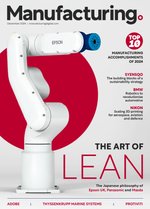Frost & Sullivan: APAC increases production investment

With middle-class consumer purchasing on the rise Manufacturers are investing in new production facilities to meet escalated demand.
As a result of this increase of production plants and machines, there has been an drive in a requirement for machine tools. An analysis by Frost & Sullivan predicts that this will push the machine tool market in Asia-Pacific to grow at a compound annual growth rate (CAGR) of 2.2% between 2018 and 2023, reaching US$10bn in revenue.
"Business expansion strategies and plant localisation of end-user industries are set to drive the growth of the machine tool industry in the APAC region," commented Divya Saiprasad, Principal Consultant, Industrials at Frost & Sullivan. "The rise in demand for machine tools can be attributed to the increase in the production of auto components and growth of the automotive industry."
SEE ALSO:
Frost & Sullivan expects Japan, South Korea and Taiwan to remain the top three markets for machine tools in the APAC region, contributing 69.5% in 2023. While economies such as Vietnam, Indonesia and Thailand are predicted to show strong growth in the next three years, as a result of foreign direct investment (FDI).
"On the end-user vertical front, engineering and automotive sectors are projected to remain dominant," commented Saiprasad. "The aviation sector is also expected to further supplement the market for machine tools, given the demand from the burgeoning upper-middle-class population."
How can machine tool vendors tap into further growth?
-
Integrating new features and technologies to increase the efficiency of multi-task tools
-
Harnessing IoT and Big Data for preventive and predictive maintenance
-
Developing smart machines equipped with AI, robots, and software technologies
-
Increasing production efficiency, shortening delivery times, and maintaining price competitiveness
-
Expanding sales, distribution, and aftermarket service channels
For more information on manufacturing topics - please take a look at the latest edition of Manufacturing Global.
Follow us on LinkedIn and Twitter.
Image source: Frost & Sullivan

